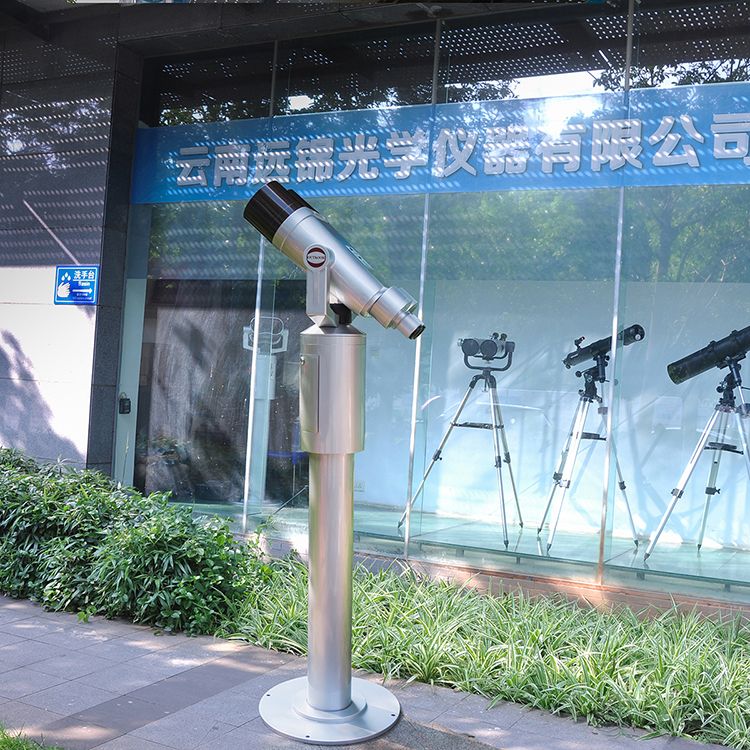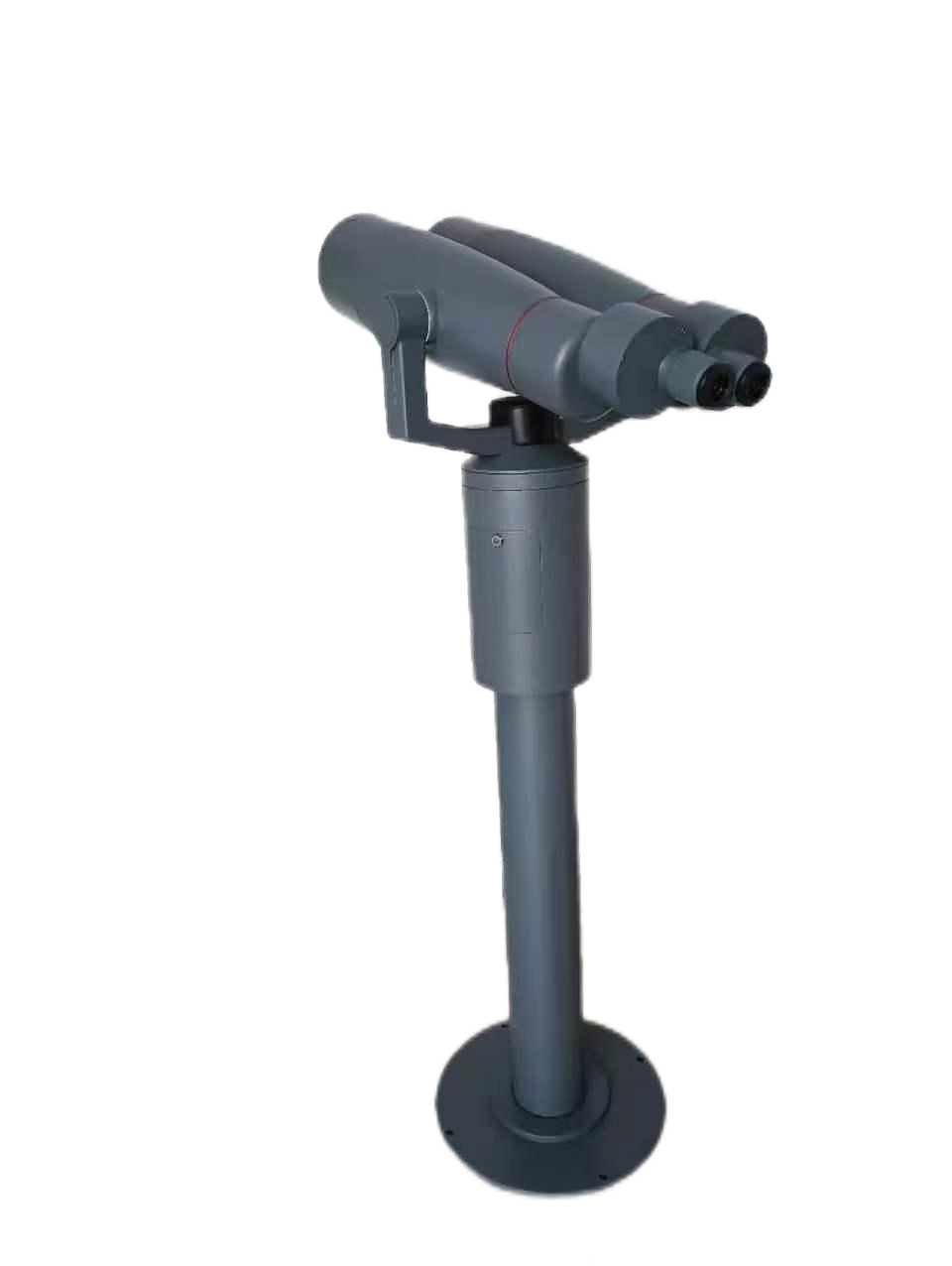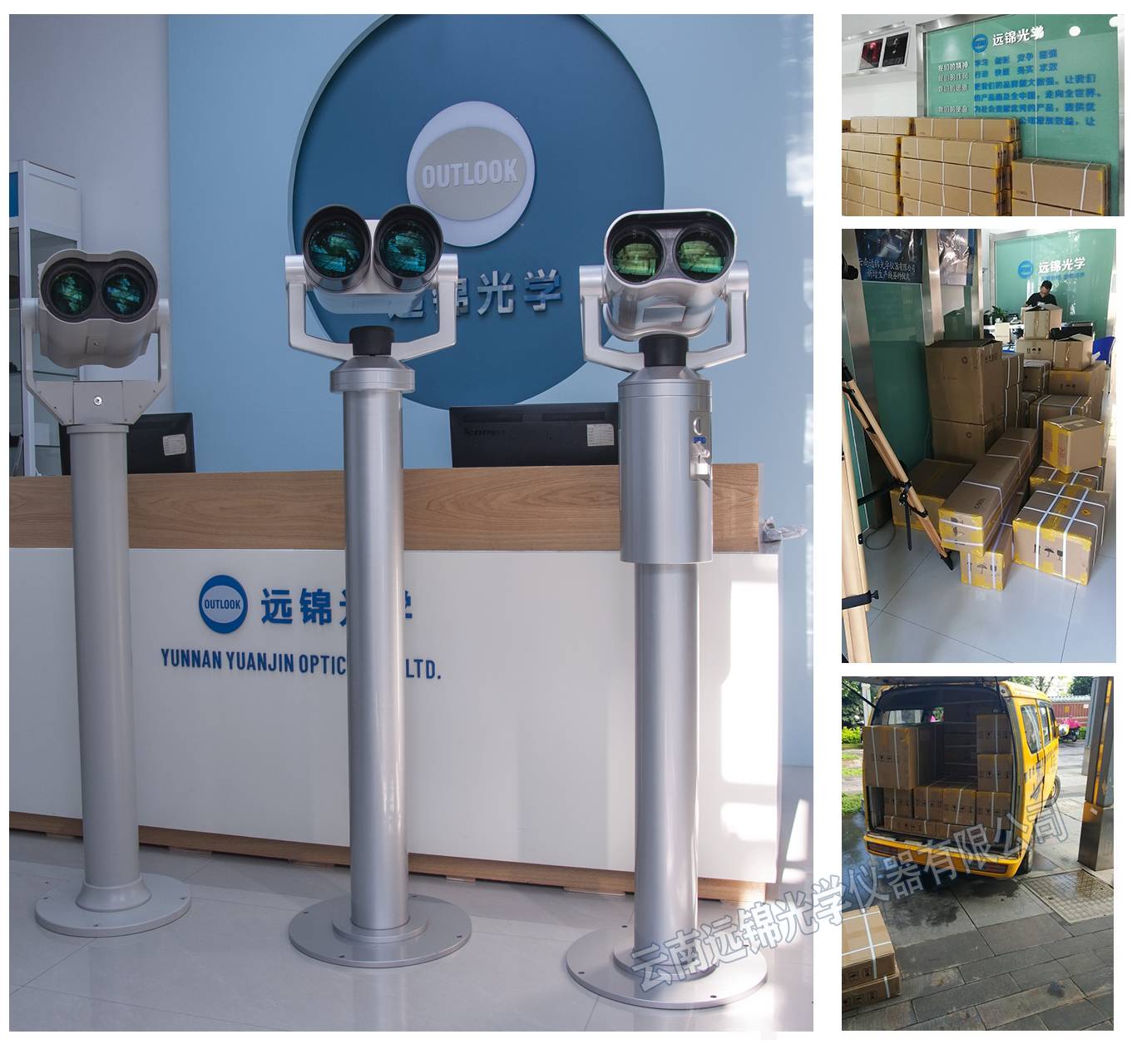Coin operated telescope typically offer the following notable features and advantages, making them suitable for tourist use:
1. High Magnification and Clarity
Magnification of coin operated telescope: Typically 10x-30x, allowing for clear observation of distant details (such s mountains, buildings, and wildlife).
Coated Lenses of coin operated telescope: Reduce glare and enhance light transmittance, resulting in brighter, sharper images, especially on cloudy days or in backlit conditions.
2. Rugged and Durable Design
Windproof and Rainproof: Outdoor coin operated telescopes often use waterproof and fog-proof materials to withstand changing weather conditions.
Metal/Shockproof Construction: Shock-resistant and wear-resistant, suitable for frequent public use.
3. User-Friendly Features
Child-Friendly: Some Coin operated telescopes feature an adjustable height stand for easier use by children.
Multi-Language Instructions: Popular coin operated telescopes may provide operating instructions in both Chinese and English.
4. Scenic Orientation Assistance
Directional Guidance: Some coin operated telescopes include markings for optimal viewing angles (e.g., "Point to the Waterfall").
Graphical Guides: The coin operated telescope body or screen may include scenic spot information to enhance the viewing experience.
5. Safety and Maintenancefor coin op telescope
Fixed Mounting: Designed to prevent theft, the coin operated telescope is typically fixed to an observation deck or guardrail.
Regular Maintenance: The scenic spot will clean the lens and inspect mechanical components to ensure proper operation.
Precautions
Check the lens for cleanliness before use and avoid direct sunlight on the lens.
If any malfunction occurs after payment, please contact the scenic spot staff.
The core value of a coin operated telescope is to instantly meet the exploration needs of tourists. Coin operated telescopes is especially suitable for landscapes that cannot be reached at close range (such as the landforms on the opposite side of the cliff, the birds on the other side of the lake), and is a practical tool to enhance the depth of the tour.

Maintenance Guide for Fixed Coin Operated Telescopes in Scenic Spots
Fixed coin operated telescopes in scenic spots (such as scan code payment telescopes and observation deck telescopes) are exposed to the outdoors for a long time and are easily affected by factors such as dust, rain, ultraviolet rays, and human damage. To ensure the long-term stable operation of the equipment, regular cleaning, inspection and maintenance of the coin operated telescopes are required.
Daily Cleaning and Maintenance of coin operated telescopes
(1) Lens Cleaning
Tools: Microfiber cloth, lens cleaning fluid (or anhydrous alcohol), air blower
Steps:
1. First use an air blower to blow away dust on the lens surface to avoid scratches.
2. Gently wipe with a lens pen or microfiber cloth, avoiding excessive force.
3. If there are stubborn stains (fingerprints, oil stains), wipe with a small amount of lens cleaning fluid.
(2)Body cleaning Tools: soft brush, wet cloth (wrung out), neutral detergent
Steps:
1. Use a soft brush to remove dust from gaps (such as the coin slot and bracket connection).
2. Wipe the body with a wet cloth. For stubborn stains, use a neutral detergent (to avoid corrosion).
3. Dry after cleaning to prevent water stains.
Mechanical component maintenance
(1) Bracket and rotating mechanism Check:
Check whether the bracket is stable and whether there are any loose screws.
Check whether the rotation is smooth and whether there is any abnormal noise or jamming. Maintenance: Add lubricant (such as silicone grease or mechanical lubricant) regularly to keep the rotation flexible. Tighten the screws in time when they are loose to prevent the equipment from shaking.
(2) Coin/code scanning system
Inspection:
Check whether the code scanning camera and coin slot are clean to avoid blockage.
Check whether the payment system is normal (such as network connection, QR code clarity).
Maintenance:
Clean the coin channel with compressed air regularly to prevent coins from getting stuck.
Check whether the circuit is damp and install a rain cover if necessary.
Moisture and corrosion prevention
(1) Waterproof and fog-proof
Measures:
Check whether the sealing strip of the telescope is aging and replace it if necessary.
Moisture-proof silicone bag can be placed in the lens barrel (replace regularly).
Wipe dry in time after rain to prevent water vapor from entering the lens.
(2) Anti-ultraviolet and high temperature
Measures:
Avoid long-term exposure to the sun and install a sunshade.
In hot weather, check the heat dissipation of the equipment to prevent electronic components from overheating.

Regular Professional Inspections
Monthly Inspections:
Check the optical lenses for mold and coating peeling.
Check the stability of the brackets and the wear of mechanical components.
Quarterly Maintenance:
Optical axis alignment by professionals (to ensure clear imaging).
Check the electrical circuits for short circuits and leakage.
Visitor Usage Management
Signages: Post signs such as "Do not shake vigorously" and "Avoid touching the lenses."
Surveillance: Install cameras to prevent vandalism and malicious coin jamming.
Common Problems and Solutions
Problem Possible of coin op telescope
Blurred image. Dirty lens, optical axis offset. Clean the lens and contact a professional for calibration.
Barcode scanning/coin insertion failure. Payment system malfunction, coin jam. Check the circuit and clean the coin slot.
A Guide to Selecting Magnification for coin op telescope
Common coin op telescope typically have a fixed magnification (not adjustable), typically between 10x and 25x. Choosing the right magnification of coin op telescope depends primarily on factors such as the target, distance, and stability.
1. Common magnifications for coin op telescope
Magnification range of coin op telescope:
Coin Op Telescope Applicable Scenarios:
Advantages and Disadvantages:
8-12x coin op telescope: Ordinary observation decks, city panoramas, lakes. Wide field of view, stable image, suitable for handheld use. Distant details are unclear.
15-20x coin op telescope: Long-range landscapes (mountains, architectural details, wildlife). Can clearly see distant objects. Requires a fixed mount; handheld use can cause shaky images.
25x+coin op telescope: Professional observation decks (astronomy, wildlife). Extremely strong magnification. Highly affected by weather; requires a tripod.
Most coin op telescope have a magnification between 15x and 40x, which meets the needs of ordinary tourists for distant observation without causing blurry images due to excessive magnification.

2. How to Choose the Right Magnification for coin op telescope ?
(1) Choose according to the observation target
View the panorama (city, lake, mountain) → 8-12 times (wide field of view, suitable for quick browsing).
View details (architectural sculptures, wildlife) → 15-20 times (can see farther targets clearly).
Extremely distant targets (snow mountain peaks, astronomical observation) → 25 times + (requires excellent weather, fixed bracket).
(2) Choose according to usage
Handheld observation (without bracket) → ≤12 times (avoids shaking and blurring).
Fixed scanning telescope (with bracket) → 15-40 times (common configuration in scenic spots).
(3) Choose according to light conditions
Sunny day, strong light → 15-25 times (clearer image).
Cloudy day, dusk → 8-12 times (low magnification is brighter in low light).
3. Common Configurations of Coin Op Telescope in Scenic Areas
Ordinary observation decks: 10-25x (balanced field of view and clarity).
High-altitude observation decks (e.g., mountaintops, tall buildings): 15-250x (suitable for long-distance observation).
Wildlife observation areas: 20-40x (requires a fixed mount).
Note:
Scenic area coin op telescopes typically have optimized magnifications, so visitors do not need to adjust them.
4. Summary
✅ Recommended for ordinary visitors: 10-25x (suitable for most scenic area viewing needs).
✅ Recommended for long-distance observation: 25-40x (e.g., high mountains, wildlife observation).
Scenic area coin op telescopes typically have fixed magnifications; visitors simply need to choose the appropriate observation point. If you bring your own binoculars, refer to this standard for selection.

